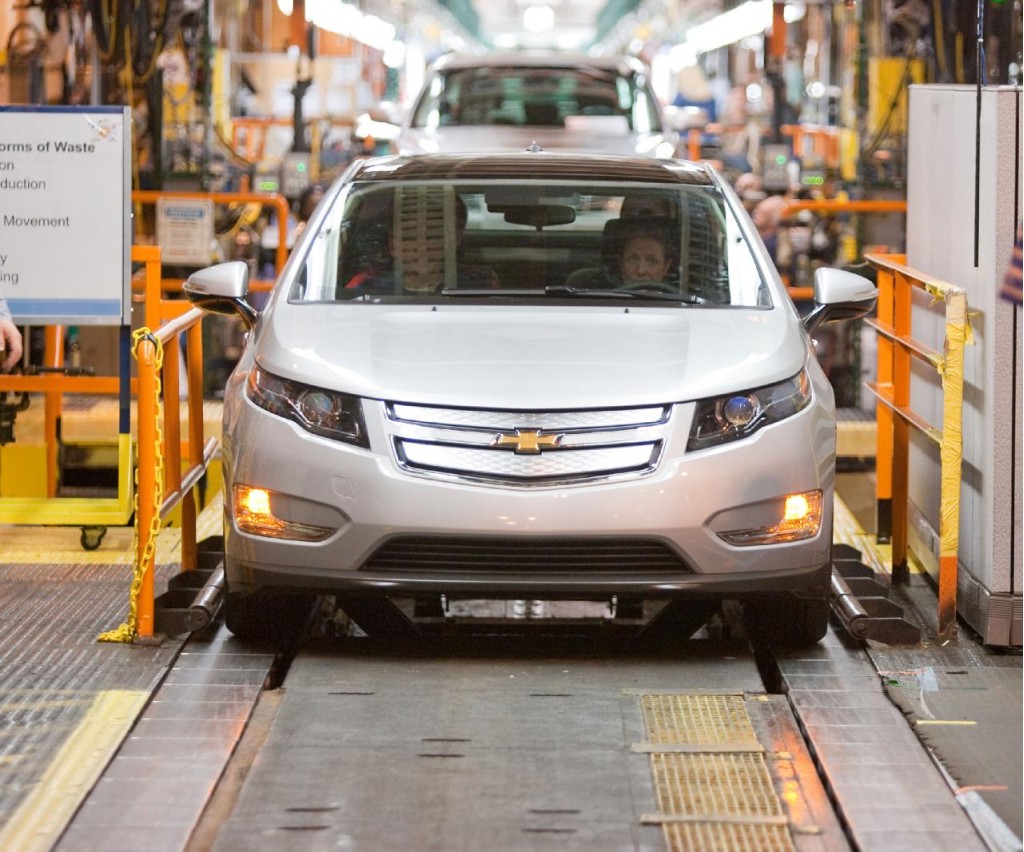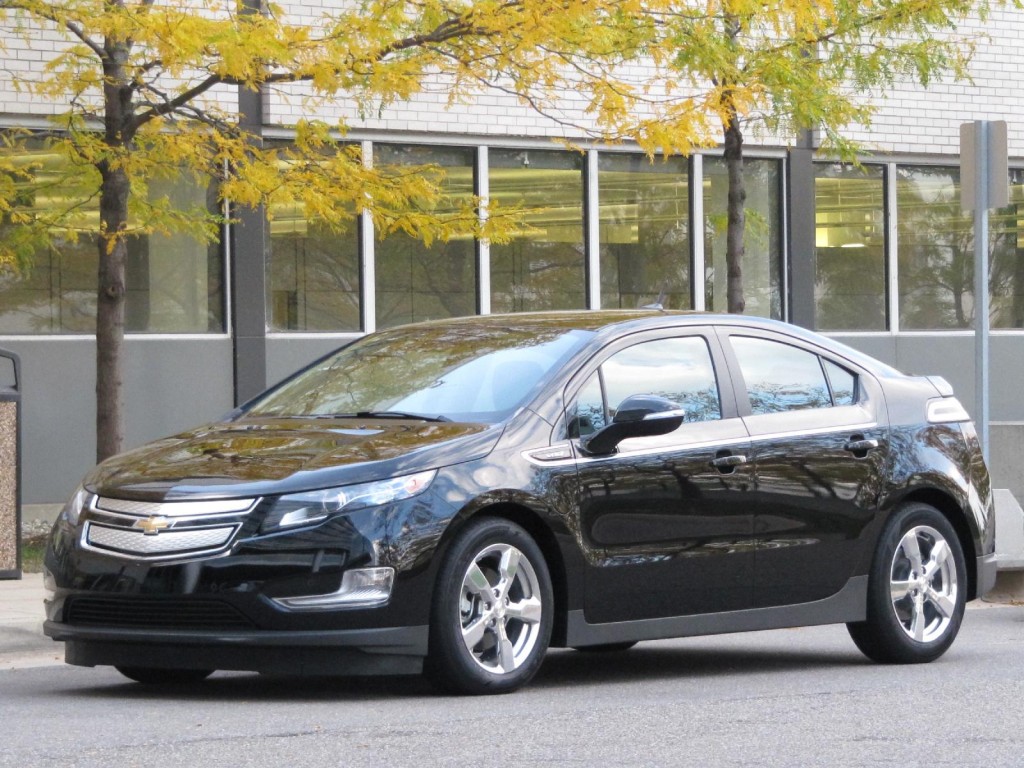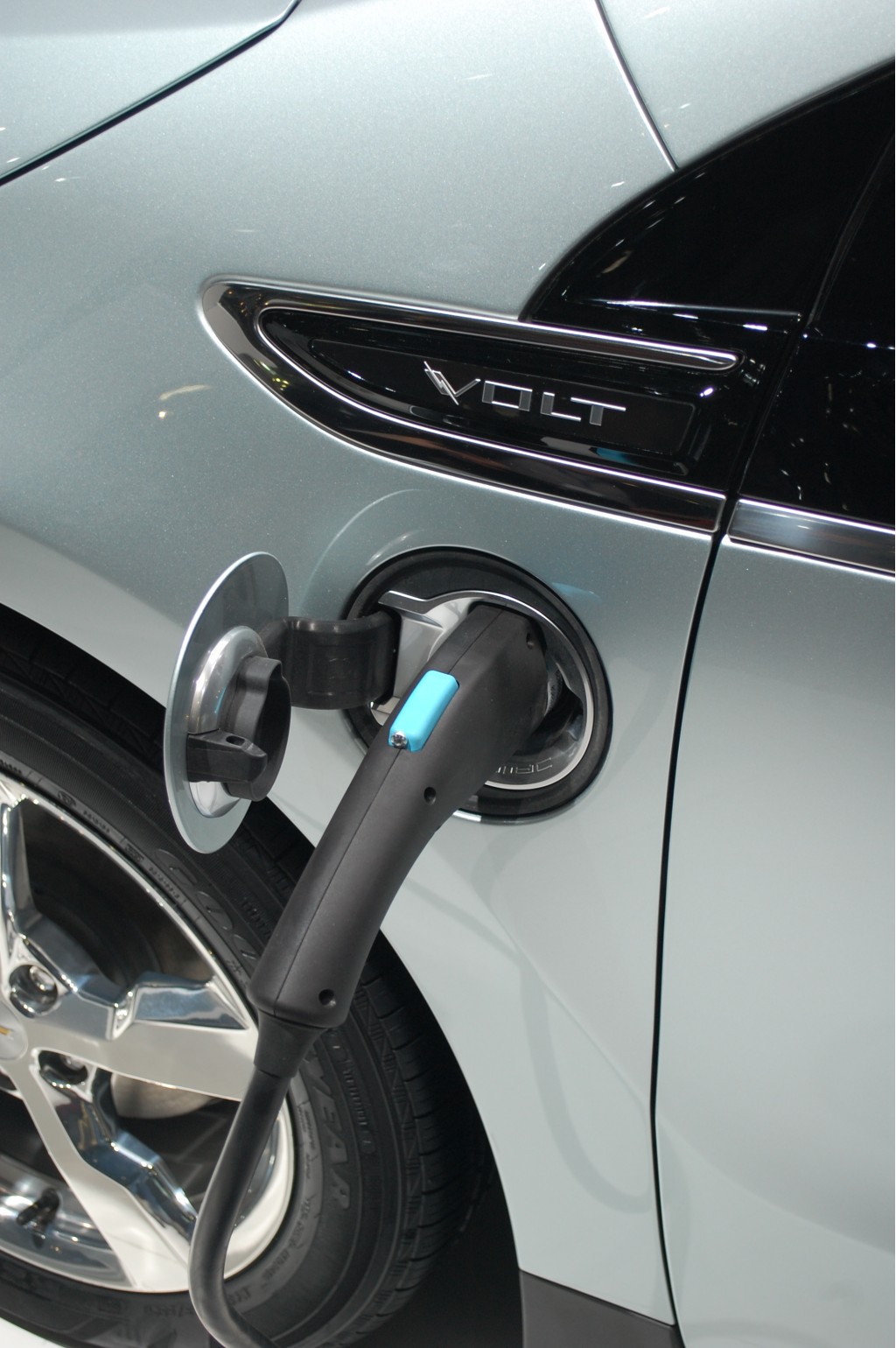It all started when General Motors CEO Dan Akerson said the company wanted to "double" production of the 2011 Chevrolet Volt, its range-extended electric car.
Various media outlets reported the news with varying degrees of accuracy. So far, GM has not officially said it will make more Volts.
Looming deadline
Chevy expects to build and sell 10,000 Volts this year, and 45,000 during 2012. Akerson said last month GM hoped to make as many as 25,000 Volts this year.
He is responding to strong consumer demand for the 2011 Volt, but he also wants to hike Volt volume for economies of scale that will drive down the costs of the Volt's many unique components--as fast as possible.
The Federal income tax credit of $7,500 for purchase of a Volt only applies to the first 200,000 cars GM sells. At $41,000 without incentives, the Volt is a tough sell.

First 2011 Chevrolet Volt built on production tooling at Detroit Hamtramck plant, March 31, 2010
(The Obama administration wants to convert the tax credit to a purchase rebate, and a bill has been introduced to raise the incentive cap from 200,000 to 600,000 vehicles per maker.)
$10,000 cheaper?
The Detroit News said Akerson challenged the Volt team to cut $10,000 out of the car's cost via higher volumes, new cell technology, even re-engineering the car's unique interior.
A source told the paper that's been accomplished, though gave no timeframe for when Volt 2.0 might launch.
45,000 in 2012
Eagerly awaited for four years, the first Volt was delivered to a New Jersey buyer on December 15. Since then, sales have hovered between 250 and 350 a month, with higher sales volumes expected later in the year as production ramps up.
GM is reportedly "working with suppliers" to hit 120,000 units next year, according to Bloomberg, once the Buick Lucerne and Cadillac DTS models built on the same line are phased out.

2011 Chevrolet Volt test drive, Michigan, October 2010
Insiders said that the LG Chem plant in Korea that provides the Volt's lithium-ion cells could supply enough cells to build 60,000 cars, with the balance being allocated for Opel/Vauxhall Ampera models--essentially a Volt with a nose job.
Not that simple
So doubling production should be as simple as ordering more cells and other components, and perhaps adding a second shift at the Detroit-Hamtramck assembly plant, right?
It's not that easy. Not by a long shot, in fact.
Volume production of plug-in cars, from not only GM but Nissan too, is a very new phenomenon indeed. Nissan has had its own delays in getting its all-electric Leaf model to buyers who put down deposits months ago.
New raw materials, new plants, new workers
Ramping up production requires not only adding a shift at the assembly plant--which trade journal Automotive News says GM is planning to do early next year--but also ordering higher volumes of the lithium-ion cells, battery-pack components, electric motors, power electronics, and other parts unique to the Voltec plug-in powertrain.
None of those parts was mass-produced before, oh, late last year. The plants that make them are often the first of their kind, and may be the sole source for that particular component anywhere in the world.

2011 Chevrolet Volt charging port
That's very different to the supply chain for more conventional auto components--from door handles to seat assemblies, and constant-velocity joints to transmissions--that often builds the same part at multiple locations across the globe. That allows much finer variations in volume to be absorbed across a network of factories.
Risk of new tech
But for the electric assemblies, you can't just turn up the dial and spit more parts out the other end. Raw materials and components must be ordered, plants must be built, and workers hired and trained--all for components that weren't mass-produced even two years ago.
In the end, it's the risk of pioneering new technology: If it takes off, the maker has to scramble to meet demand before competitors get there. And the auto industry is known globally for its ability to squeeze costs out of high-quality, complex electromechanical devices through successive generations of re-engineering.
Of course, GM would much rather be in this position than having tooled up to build high volumes of a vehicle that flopped. Pontiac Aztek, anyone?
[Automotive News (subscription required)]
+++++++++++












